Bose Smart Soundbar 600 review: small size, big sonics, believable Atmos
This smaller-scale soundbar delivers true Dolby Atmos 3D sound decoding with height channels, and it's rather capable indeed...


Big sound from a small soundbar can only be a good thing, right? And when that sound is an authentic Dolby Atmos soundtrack, the Bose Soundbar 600 is capable of delivering big, immersive sound. It’s by no means your only choice at this sort of money, but it’s most definitely a strong option.
-
+
Organised, confident and expansive sound
-
+
Compact and well made
-
+
Easy to integrate into a bigger system
-
-
Not quite as adept with sub-Dolby Atmos content
-
-
Some very strong competition
-
-
Wall-bracket costs extra
Why you can trust T3

The dream, of course, is to get great big home cinema sound from the smallest, most discreet speaker cabinet possible. Many have tried… and with a very few notable (and subsequently wildly successful) exceptions, the failure rate is through the roof.
Of course, these portents aren’t enough to put off a company as serious and successful as Bose. And so here’s the Smart Soundbar 600 - it’s physically small and discreet, it’s configured to serve up spatial audio, and it’s priced to meet its very few realistic best soundbar competitors head-on.
So is Bose living the dream?
Bose Soundbar 600 review: Price & Availability
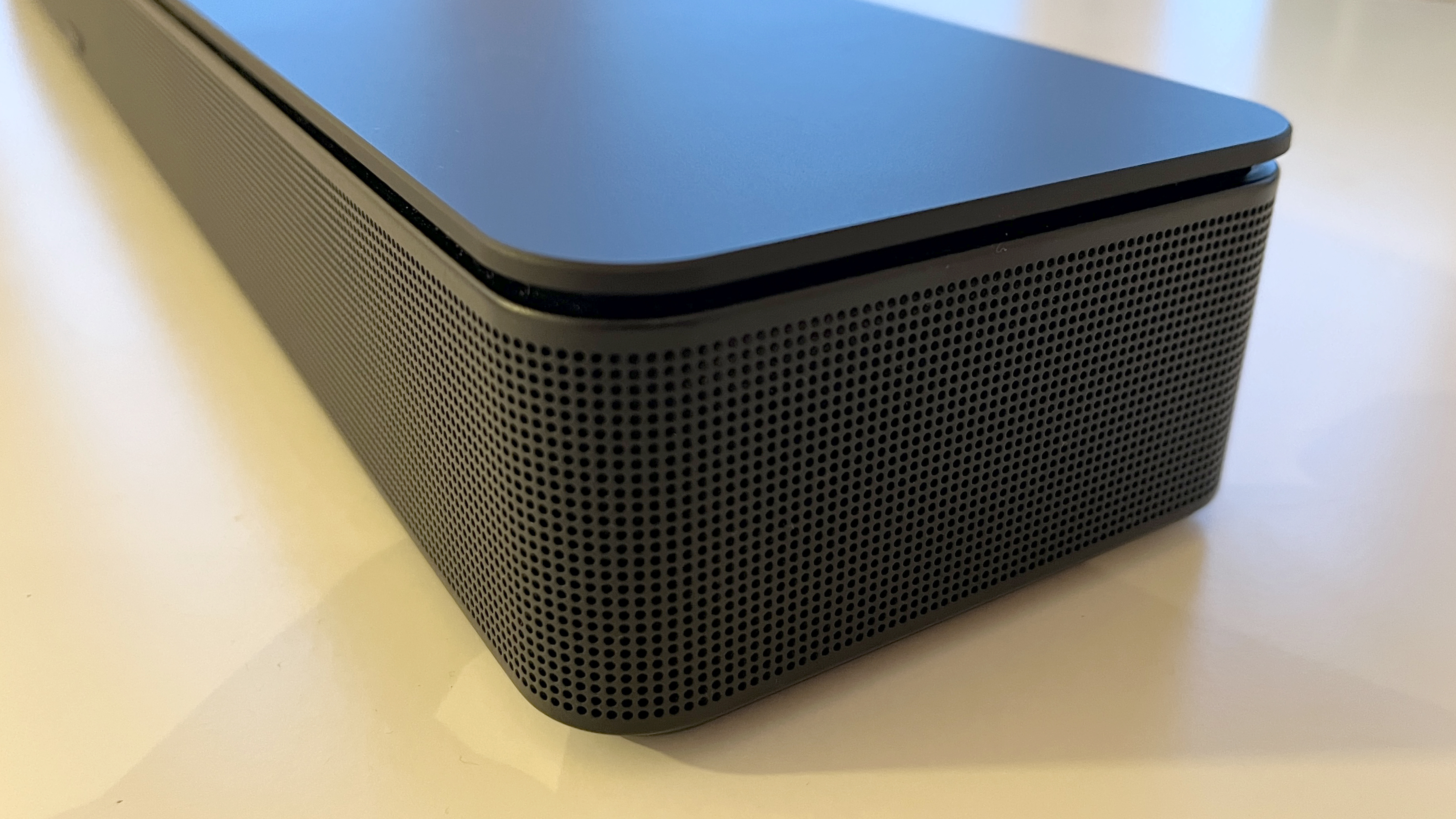
The Bose Smart Soundbar 600 is on sale now, and in the United Kingdom it’s priced at £499. Well, it’s £499 on the Bose website, but you don’t need to be any kind of search-engine ninja to find a slightly better deal - as you can see in the shopping widget embedded below.
In the United States, meanwhile, it’s yours for no more than $499 - this is home territory for Bose, after all, so you’d expect it to be very keenly priced. In Australia, expect to have to part with AUD$799 or thereabouts.
The most obvious rival to the Smart Soundbar 600 - at least as far as dimensions and pricing are concerned - is the second-generation Beam by Sonos. Unlike this Bose, the Sonos relies on digital processing rather than actual hardware to deliver an impression of spatial audio - but that doesn’t seem to have held the Beam Gen 2 back. Taking on Sonos is never for the faint-hearted - but then that’s something Bose is seldom accused of being
Bose Soundbar 600 review: features & what’s new?
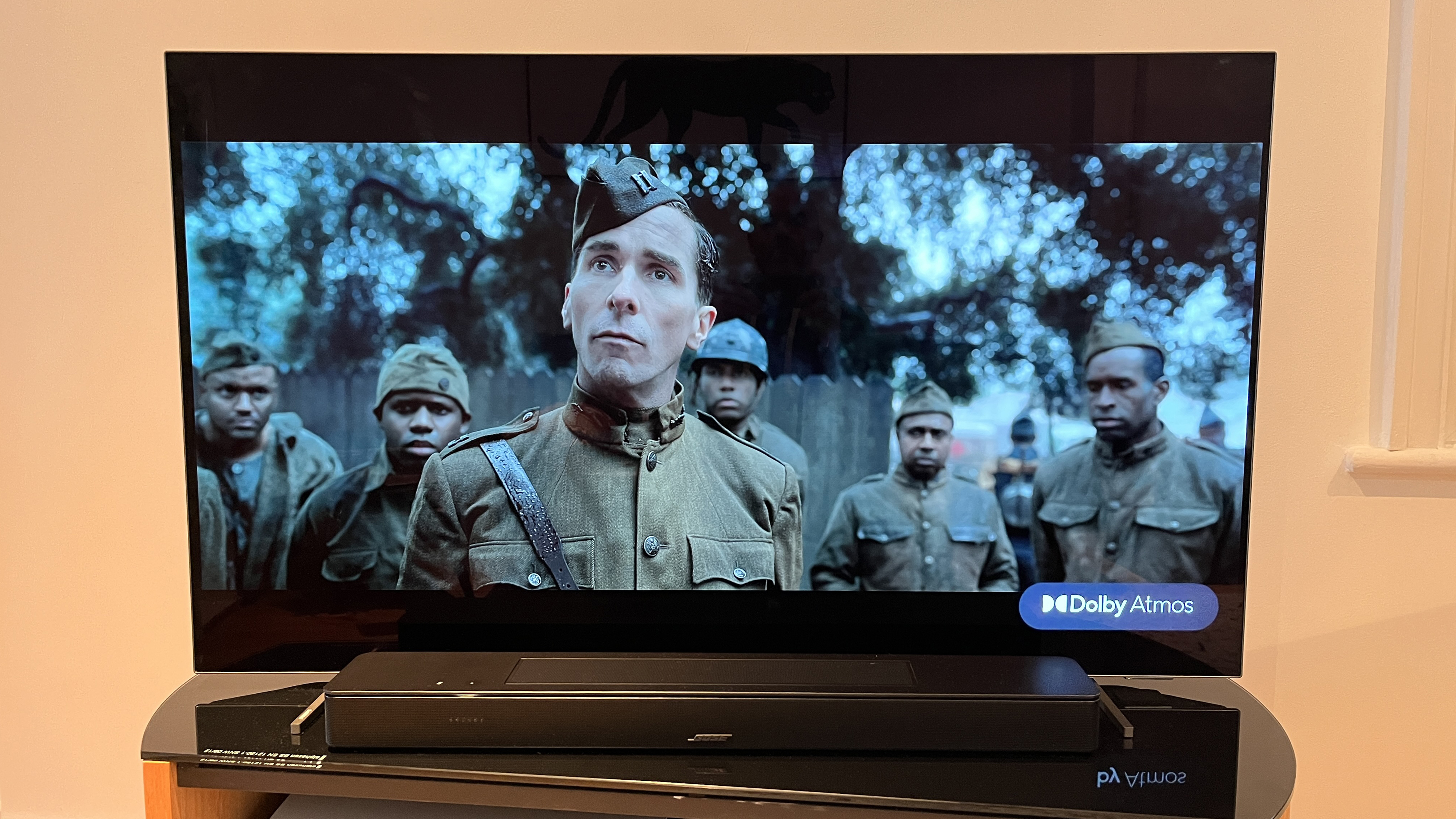
The Bose wants to combine plug-and-play simplicity with a true impression of Dolby Atmos spatial audio, and so its feature set is strictly focused. Which, for those of us who like to be enjoying our nice new product inside 20 minutes of unboxing it, is nothing but good news.
Get all the latest news, reviews, deals and buying guides on gorgeous tech, home and active products from the T3 experts
Aside from mains power, the only connection required to extract top-shelf performance from the 600 is from your TV’s eARC-enabled HDMI socket to the corresponding socket on the rear of the soundbar. Both cables, along with a digital optical cable, are provided in the Bose’s packaging. There’s no room-calibration routine to be run, and nothing to come between you and Dolby Atmos sound - simply start streaming some Atmos-equipped content from your favourite service and you’re in business.
As far as other physical connections go, there’s just a USB for servicing, and a couple of connections for a hard-wired ‘bass module’ (which is Bose-speak for ‘subwoofer’) and a wired IR blaster. If you want to use a wireless Bose subwoofer and wireless Bose rear speakers to create a full-on surround-sound system, go right ahead.
Wireless alternatives are available in the form of dual-band Wi-Fi, Apple AirPlay 2, Bluetooth 4.2 (with SBC and AAC codec compatibility), Chomecast Built-In and Spotify Connect.

No matter the method you employ to get your content on board the Smart Soundbar 600, it’s served by a total of five speaker drivers powered by a secret amount of Class D amplification. A 32mm tweeter faces forwards from the centre of the ‘bar, while two 57mm full-range drivers fire up and out from behind the metal grille on top. A further two full-range drivers, each 44 x 102mm in a ‘racetrack’ configuration, face outwards from the soundbar’s ends - they’re carefully angled to offer some width to the 600’s presentation. The low-end presence is bolstered by a couple of small reflex ports that vent at the rear of the cabinet.
Compatibility with Dolby Atmos means spatial audio from an appropriate soundtrack, of course. But the 600 uses its ‘TrueSpace’ technology to deliver an impression of spatial audio from whatever you’re listening to too.
Bose soundbar 600 review: Performance

At its best, the Bose Smart Soundbar is as uncomplicatedly enjoyable to listen to as it is straightforward to set up. It delivers an open, generous sound that’s going to be an obvious and significant upgrade to pretty much any TV that doesn’t have a premium audio system already attached.
Tonally, it’s undeniably got that ‘Bose’ thing going on - we’re not ones for lazy stereotypes, but anyone with experience of a Bose product or two will know what we’re talking about. There’s just a hint of warmth in the 600’s sound, a suggestion of richness and substance, that can give a definite impression of luxuriousness in the right circumstances and a little hint of woolliness in the wrong ones.
There’s decent bite at the top of the frequency range despite this, though, and sufficient control to the (surprisingly deep and nicely textured) low frequencies at the points of attack and decay to prevent things getting overheated. And in the midrange, where the majority of movie soundtracks keep the bulk of their information, dialogue is crisply rendered and contains a great deal of detail both broad and fine. The journey from the bottom of the frequency range to the top is smooth and even, and while the centre channel projects voices with real positivity they still manage to be part of an overall presentation rather than an entirely separate entity.
The Smart Soundbar 600 is adept where dynamics are concerned too. Most soundbars are prepped to make the most of those big and/or switches in volume that are such a Hollywood trope, but not every soundbar is as attentive to the more nuanced dynamic variations present in a voice or a solo instrument. The Bose can even make the difference between the first and second bursts of engine-revving apparent.
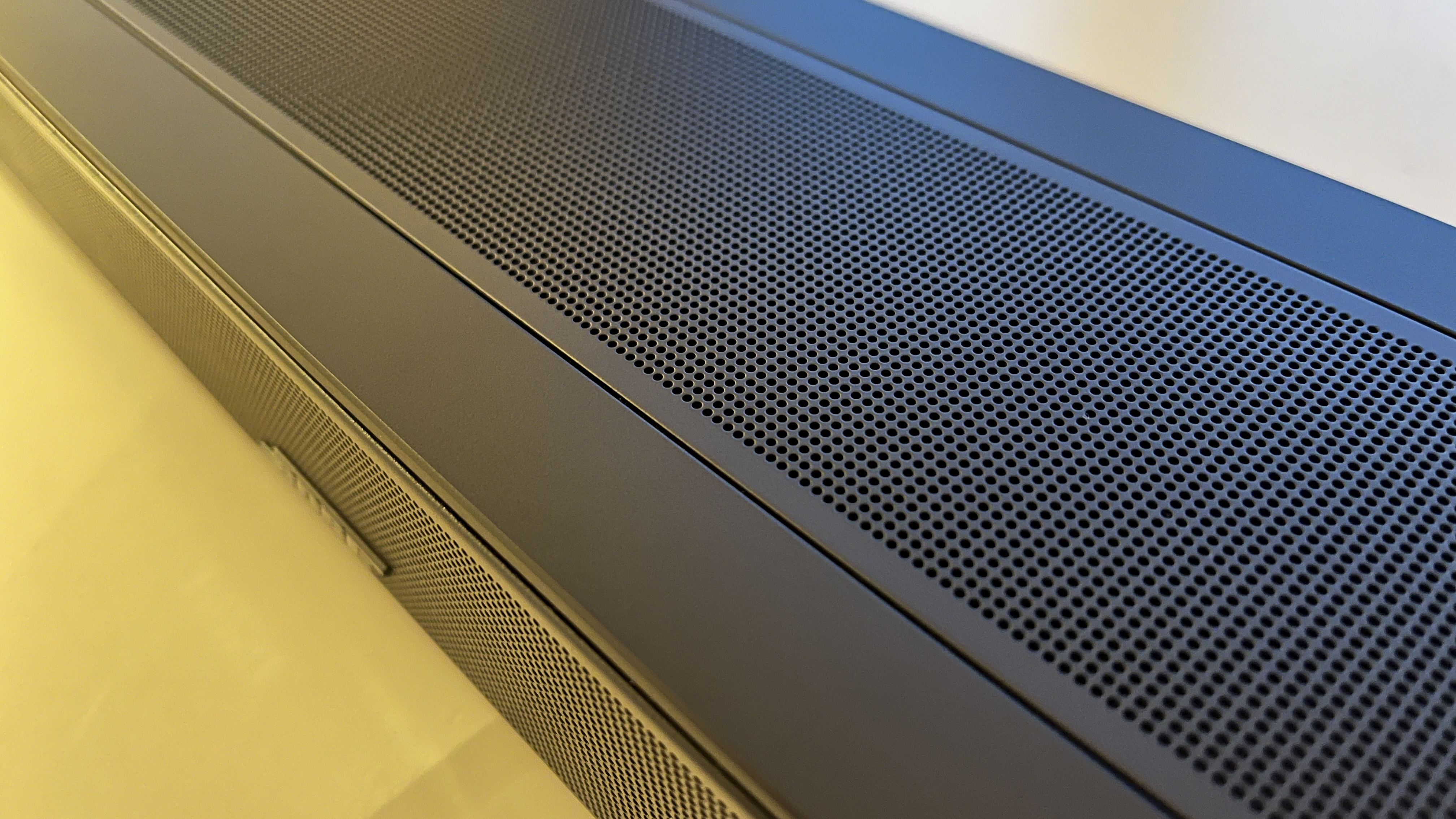
Given that it has drivers facing in four different directions, the soundstage the 600 creates isn’t the most expansive - but then again, given that it has drivers facing in four different directions, the soundstage the 600 creates is remarkably coherent. The directness and positivity of that front-facing tweeter is nicely complemented by the side-firing full-range drivers, so there’s a degree of width to the stage and effects that move in the horizontal plane are easy to track and convincing to listen to.
The upward-firing drivers, meanwhile, can generate a definite suggestion of height and elevation in those moments of a soundtrack designed to showcase its spatial nature. ‘Overhead’ is to overstate it a little, it’s true - but nevertheless the Bose allows sounds to exist on a vertical axis, and that’s by no means a given with soundbars at this sort of money with pretensions towards spatial audio. Certainly there’s enough width and height to the 600’s soundstage for ‘immersive’ to be a valid description.
This all assumes a soundtrack that’s natively Dolby Atmos, though. More prosaic (and more common) 5.1 mixes are had at by Bose’s ‘TrueSpace’ algorithm - and while it does impressive work in teasing some vertical presence out of a horizontal soundtrack, the results aren’t the most direct or most positive in sonic terms. There’s some haziness where there was straight-edged clarity, and consequently the 600 becomes a slightly more vague listen. It remains fairly big and pretty punchy, mind you, which has to count for something.
Bose Soundbar 600 review: design & usability
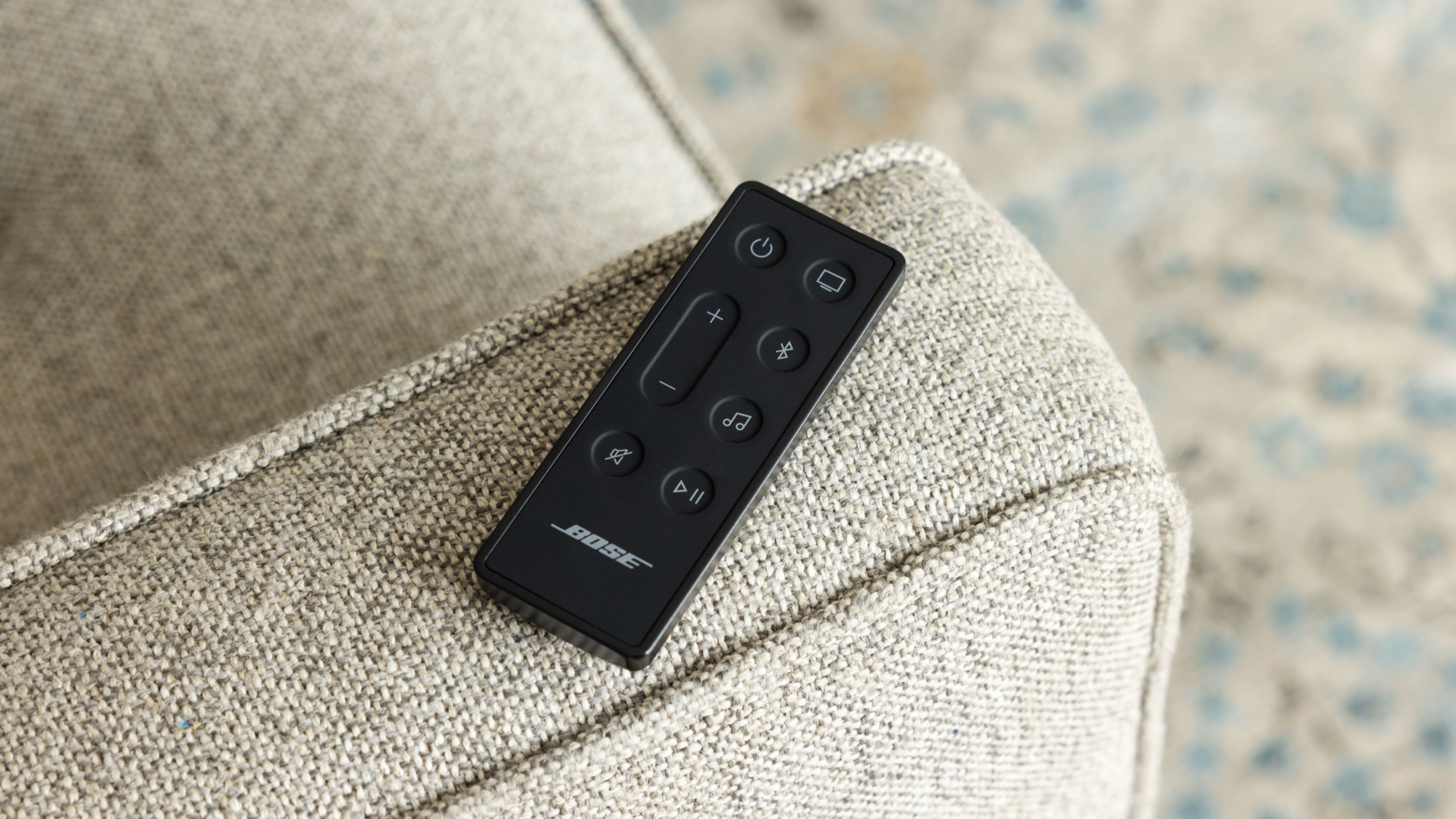
Not everyone wants their soundbar to make a visual statement - and it’s those people Bose has in mind with the design of the Smart Soundbar 600.
At 56 x 694 x 10mm (HxWxD) it’s compact enough to sit happily beneath even the smallest TVs (‘smallest’ in this instance means 42-43in - anything smaller is an anachronism these days). At 3.1kg it’s light enough to be wall-mounted without alarms - although Bose has ignored the opportunity to put simple keyhole mounting points on the rear of the chassis, and instead offers a wall-bracket as a cost option.
‘Black’ is the single colour option here, so that’s one decision you won’t have to agonise over. The 600 is built mostly from robust, quite tactile plastic - there’s a metal grille on a portion of the top surface, behind which the upward-firing drivers are doing their thing, and more of the same tightly perforated metal covering the front and sides of the cabinet. Build quality, as both the brand and the asking price strongly suggest, is unquestionable.
As far as usability is concerned, Bose has included a number of options. The Smart Soundbar 600 ships with a tidy little remote control handset - via its quite long-travel buttons it’s possible to control power on/off, input selection, volume up/down/mute, and play/pause. There are a couple of touch controls on top of the soundbar itself, just above a little tell-tale light strip - one switches the integrated mic on or off, the other offers access to Alexa voice control.

The 600 is also compatible with the Bose Music app, and it’s from here you can get access to control of every type. From adjusting volume and selecting source to adjusting the relative response of centre and height channels, or fiddling with bass and treble levels, it’s all available here.
The app is where you can integrate the Smart Soundbar 600 into a multichannel system with rear speakers and/or a subwoofer, where you can set up Amazon Alexa voice-control or enable Chromecast… it’s not much to look at, the Bose Music app, but it’s got it where it counts. And if you prefer Google Assistant to Amazon Alexa, all you need is a Google-enabled smart speaker on a common network.
Bose Smart Soundbar 600 review: Verdict
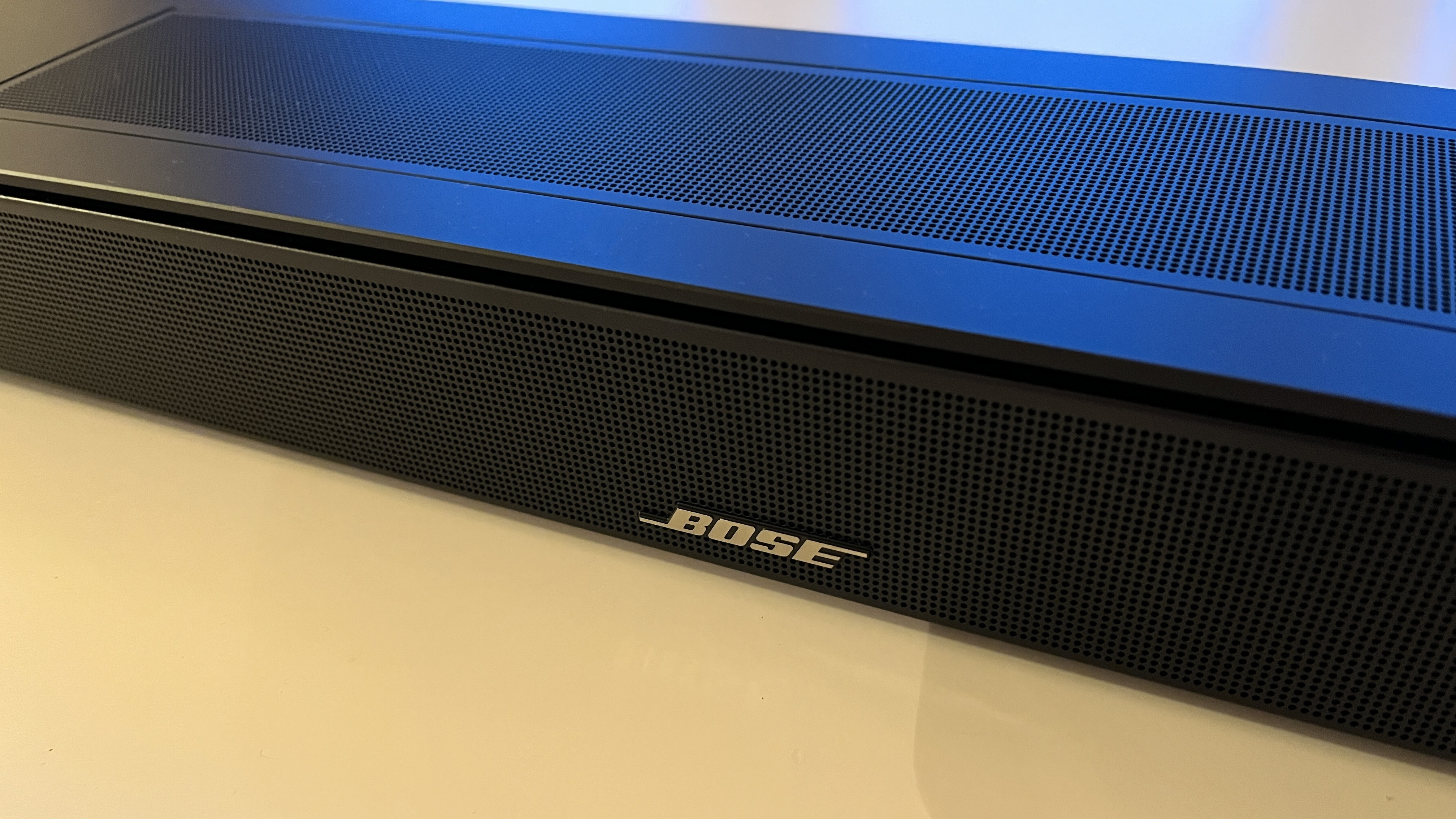
If every soundtrack was a Dolby Atmos soundtrack, the Bose Smart Soundbar 600 would make absolutely perfect sense - it’s a grander and more immersive listen than its dimensions suggest might be possible, albeit fractionally warm-sounding. Its insistence on attempting to pull off the spatial audio trick with everything, though, compromises it just a little and leaves the door open to the best of its rivals. Even so, for this sort of money it’s most definitely a strong option.
Also consider
The Sonos Beam Gen 2 is the obvious rival here, and it’s obvious for a reason - well, a few reasons really. It’s similarly priced, similarly unassuming in its physical dimensions, and similarly at home as part of a multichannel or multiroom system as it is working alone. But most of all, it’s a similarly capable soundbar - which means it’s a similarly entertaining listen. Its digital sound processing is clever, no doubt - but the Bose 600 makes it apparent that it’s no substitute for actual drivers firing in an actual direction in an effort to deliver actual spatial audio. The Beam Gen 2 counters strongly with its flexibility, though - no ecosystem around is the equal of that of Sonos.
Simon Lucas is a freelance technology journalist and consultant, with particular emphasis on the audio/video aspects of home entertainment. Before embracing the carefree life of the freelancer, he was editor of What Hi-Fi? magazine and website – since then, he's written for titles such as Wired, Metro, the Guardian and Stuff, among many others. Should he find himself with a spare moment, Simon likes nothing more than publishing and then quickly deleting tweets about the state of the nation (in general), the state of Aston Villa (in particular) and the state of his partner's cat.
